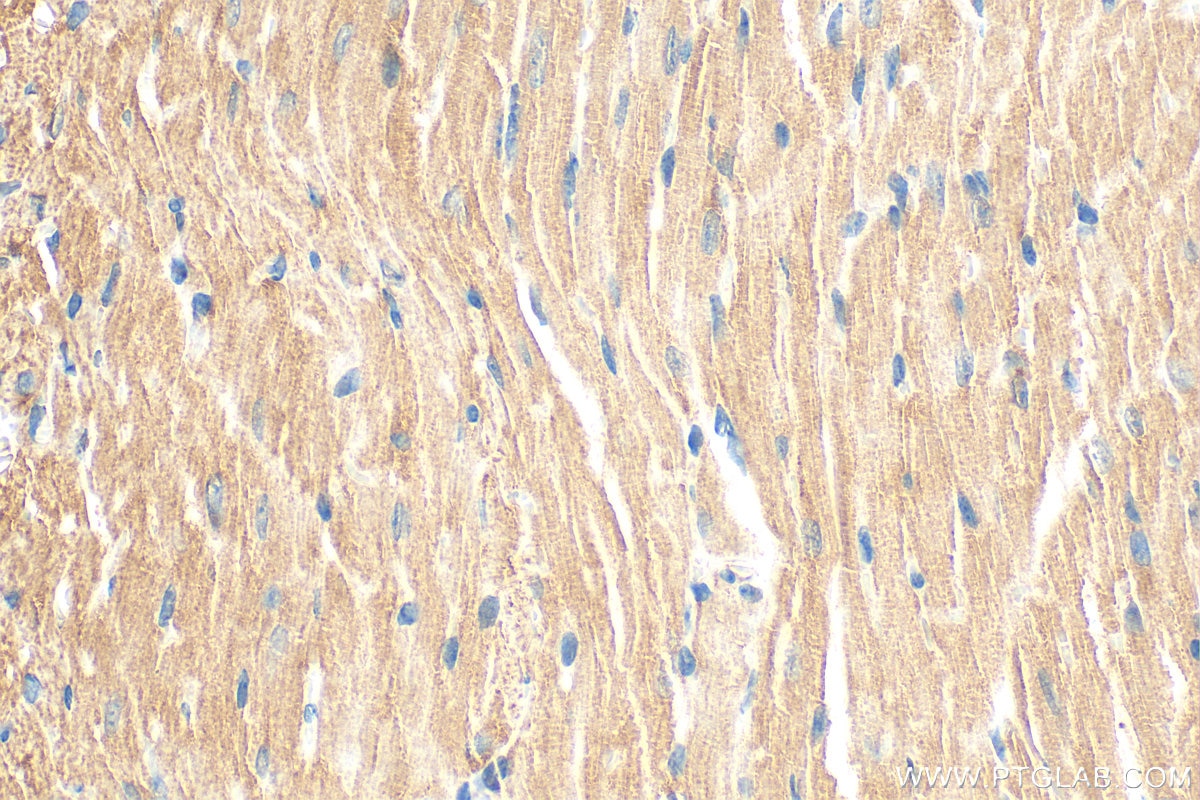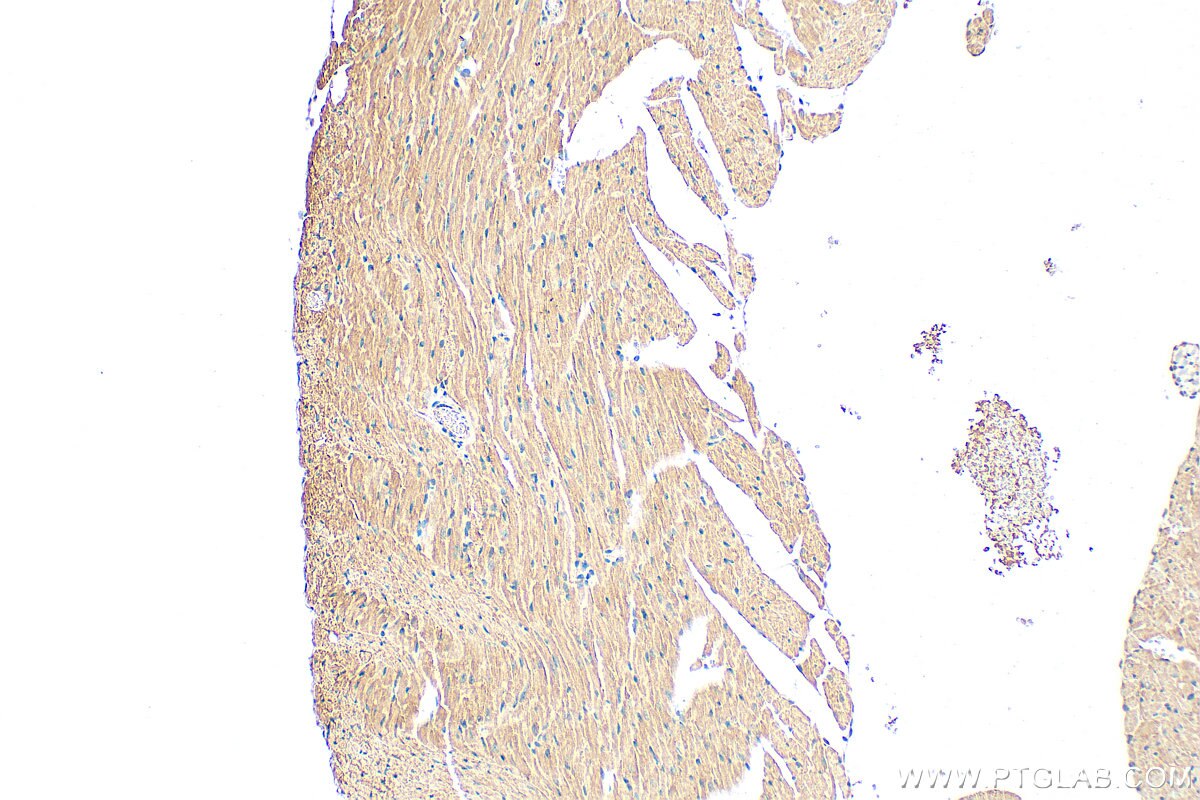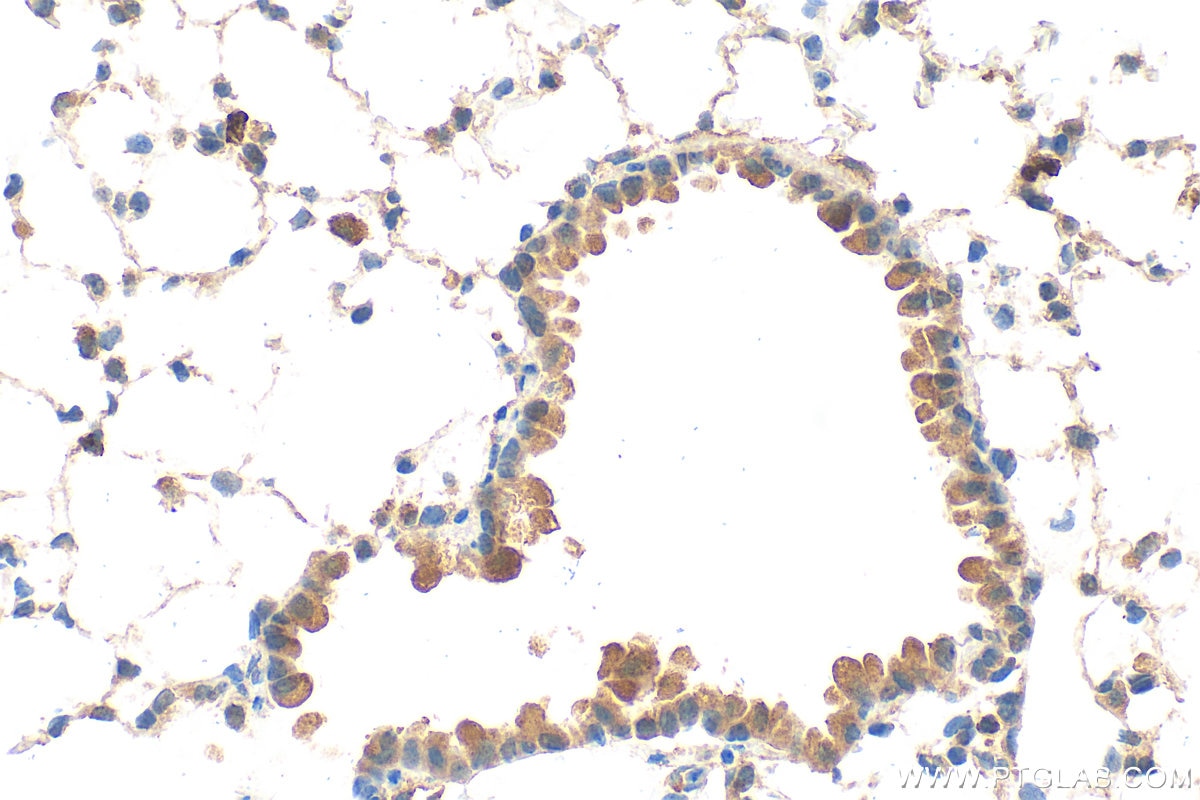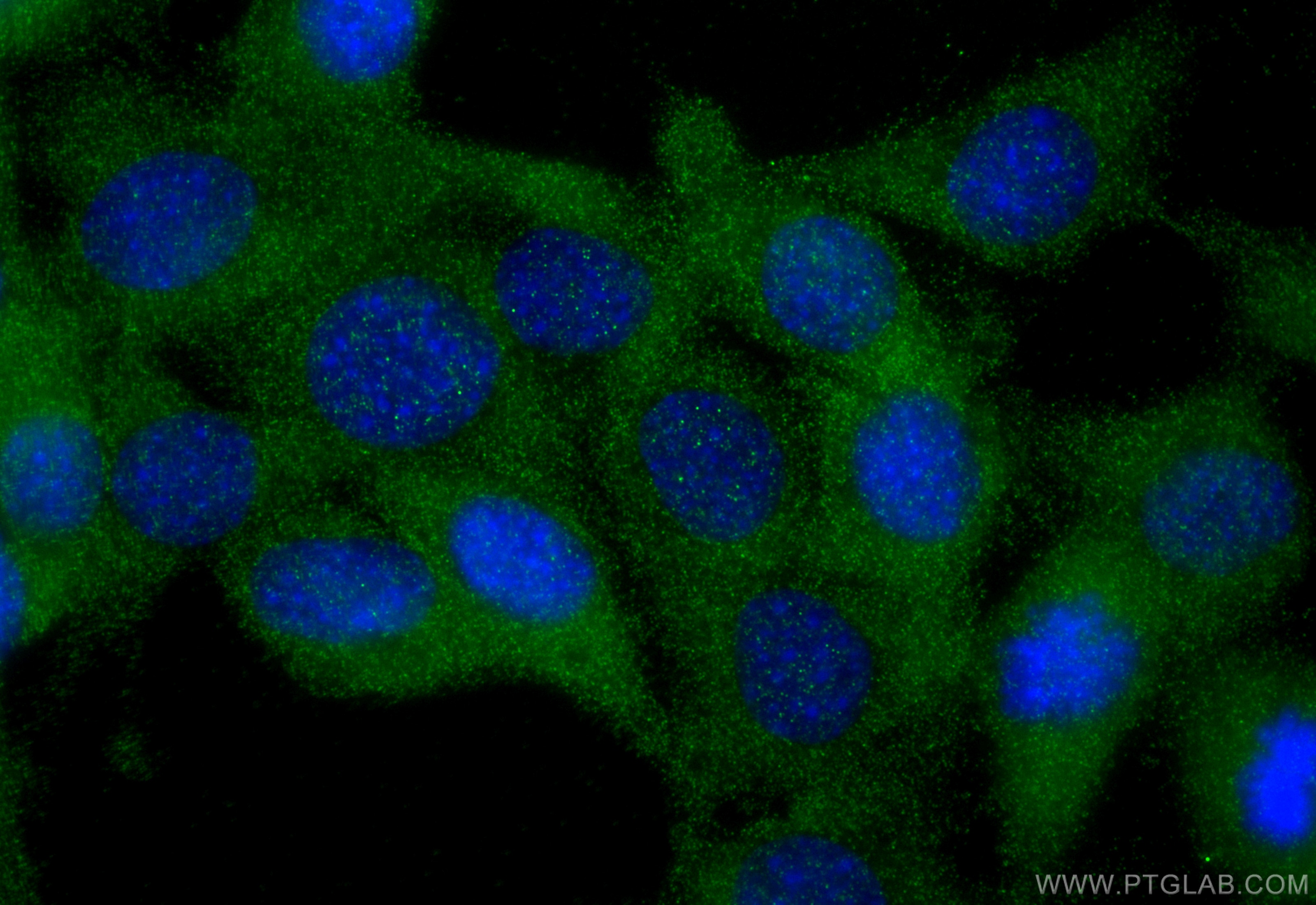Tested Applications
| Positive IHC detected in | mouse heart tissue, mouse lung tissue Note: suggested antigen retrieval with TE buffer pH 9.0; (*) Alternatively, antigen retrieval may be performed with citrate buffer pH 6.0 |
| Positive IF/ICC detected in | C2C12 cells |
Recommended dilution
| Application | Dilution |
|---|---|
| Immunohistochemistry (IHC) | IHC : 1:50-1:500 |
| Immunofluorescence (IF)/ICC | IF/ICC : 1:50-1:500 |
| It is recommended that this reagent should be titrated in each testing system to obtain optimal results. | |
| Sample-dependent, Check data in validation data gallery. | |
Product Information
21437-1-AP targets FBXL21 in IHC, IF/ICC, ELISA applications and shows reactivity with human, mouse samples.
| Tested Reactivity | human, mouse |
| Host / Isotype | Rabbit / IgG |
| Class | Polyclonal |
| Type | Antibody |
| Immunogen | FBXL21 fusion protein Ag16049 Predict reactive species |
| Full Name | F-box and leucine-rich repeat protein 21 |
| Calculated Molecular Weight | 434 aa, 49 kDa |
| GenBank Accession Number | BC106753 |
| Gene Symbol | FBXL21 |
| Gene ID (NCBI) | 26223 |
| Conjugate | Unconjugated |
| Form | Liquid |
| Purification Method | Antigen affinity purification |
| UNIPROT ID | Q3KPF8 |
| Storage Buffer | PBS with 0.02% sodium azide and 50% glycerol, pH 7.3. |
| Storage Conditions | Store at -20°C. Stable for one year after shipment. Aliquoting is unnecessary for -20oC storage. 20ul sizes contain 0.1% BSA. |
Background Information
FBXL21 (F-box and leucine-rich repeat protein 21) is a member of the F-box protein family, which plays a crucial role in regulating protein degradation through the ubiquitin-proteasome system. FBXL21 has been identified as a regulator in skeletal muscle. It mediates the rhythmic degradation of sarcomere proteins such as TCAP (titin cap) and MYOZ1 (Myozenin1) in conjunction with GSK-3β (PMID: 36574402).
Protocols
| Product Specific Protocols | |
|---|---|
| IHC protocol for FBXL21 antibody 21437-1-AP | Download protocol |
| IF protocol for FBXL21 antibody 21437-1-AP | Download protocol |
| Standard Protocols | |
|---|---|
| Click here to view our Standard Protocols |









